Painting Symbols
Art • Painting • Design
Mar 3
Words have failed me.
But I've learned to use other tools.
Humans love symbols. We love communicating without words. You can see it everywhere, from art to branding—a story has been carefully crafted to transcend spoken language. When words fail to express complex feelings, art is there to fill in the gaps.
Painting is a very personal medium for me. As someone who loves to plan, the white canvas provides an empty universe for me to fill with my own world. I get to tell a story using colors, shapes, patterns, and symbols. I can craft this narrative as I see fit; it's up to me if it’s happy or sad, easy to understand, or too complex even for myself.
Recently, I finished some very challenging paintings—not just because of the size and details, but because of the time they took to finish. I could only paint during very special moments. I needed a lot of energy before even thinking of picking up my brushes.
The paintings are a set of murals on the
walls of my bedroom.
Let me give you a
tour of one of them.
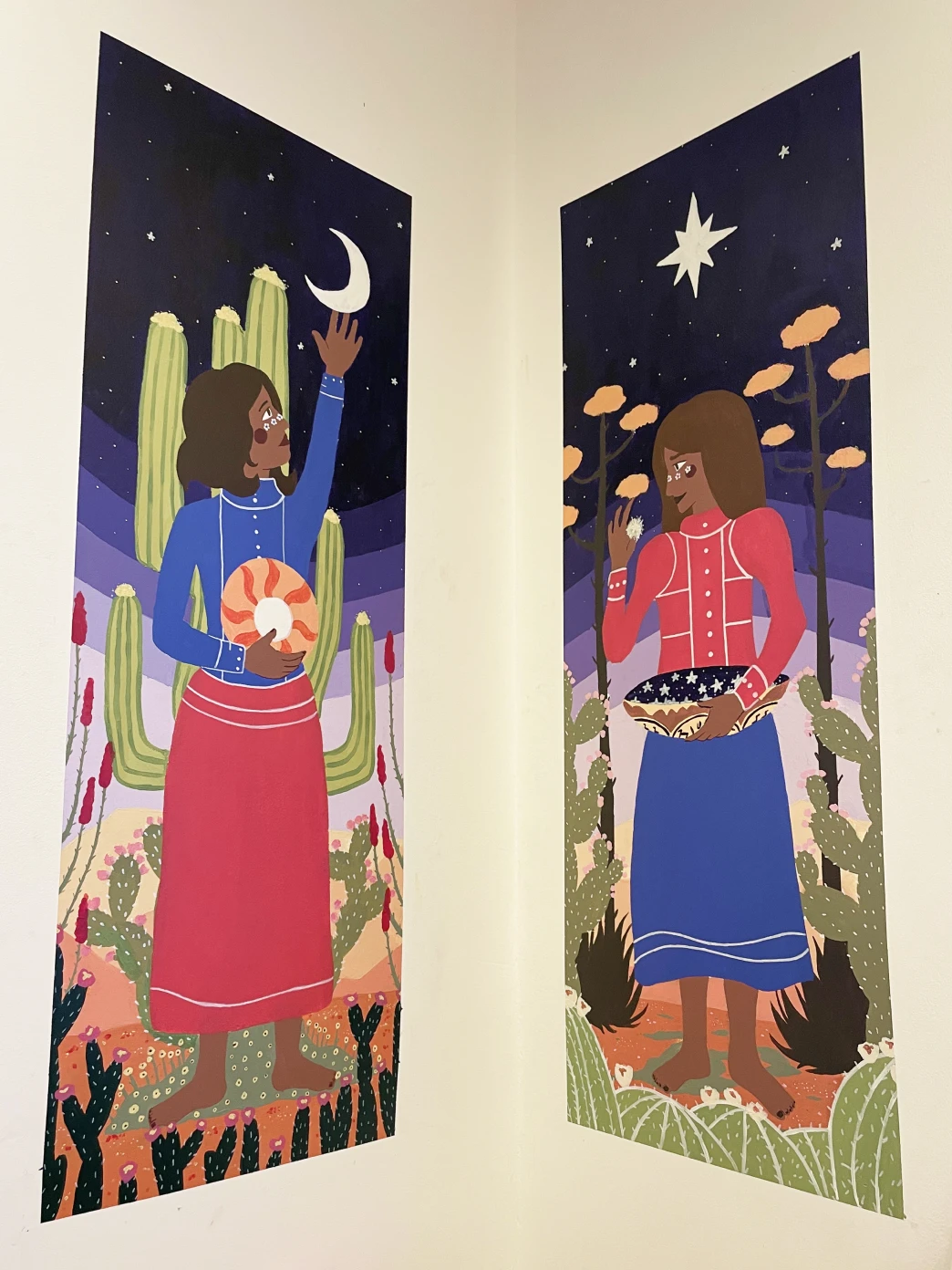
Finished murals side by side, we will focus on the one on the left.
Step 1: Idea
I always want to make the spaces I inhabit beautiful. This is one of my core design values and the seed for this project. I love my flat—it’s very sunny and peaceful—but when I moved in, it felt a bit cold. Maybe it was all the white walls and gray furniture, which fit a lovely modern aesthetic but felt cold to my Mexican sensibilities.
Have I mentioned I’m Mexican? Oh, I very much am and will take any chance to remind you.
I wanted my space to reflect this, which is why before moving to Europe, I made a pit stop at a market in Mexico City to buy all sorts of handwoven textiles. Pro tip: They’re easy to transport and can make any place feel special.
Back to my modern flat. I base my decorating decisions on a simple rule: if I look at a room from any point, I want to have a nice view. The bedroom, although comfortable, needed some help. The plain white walls made me feel like I was waking up in the middle of the fog. So I decided to paint something to bring in some color.
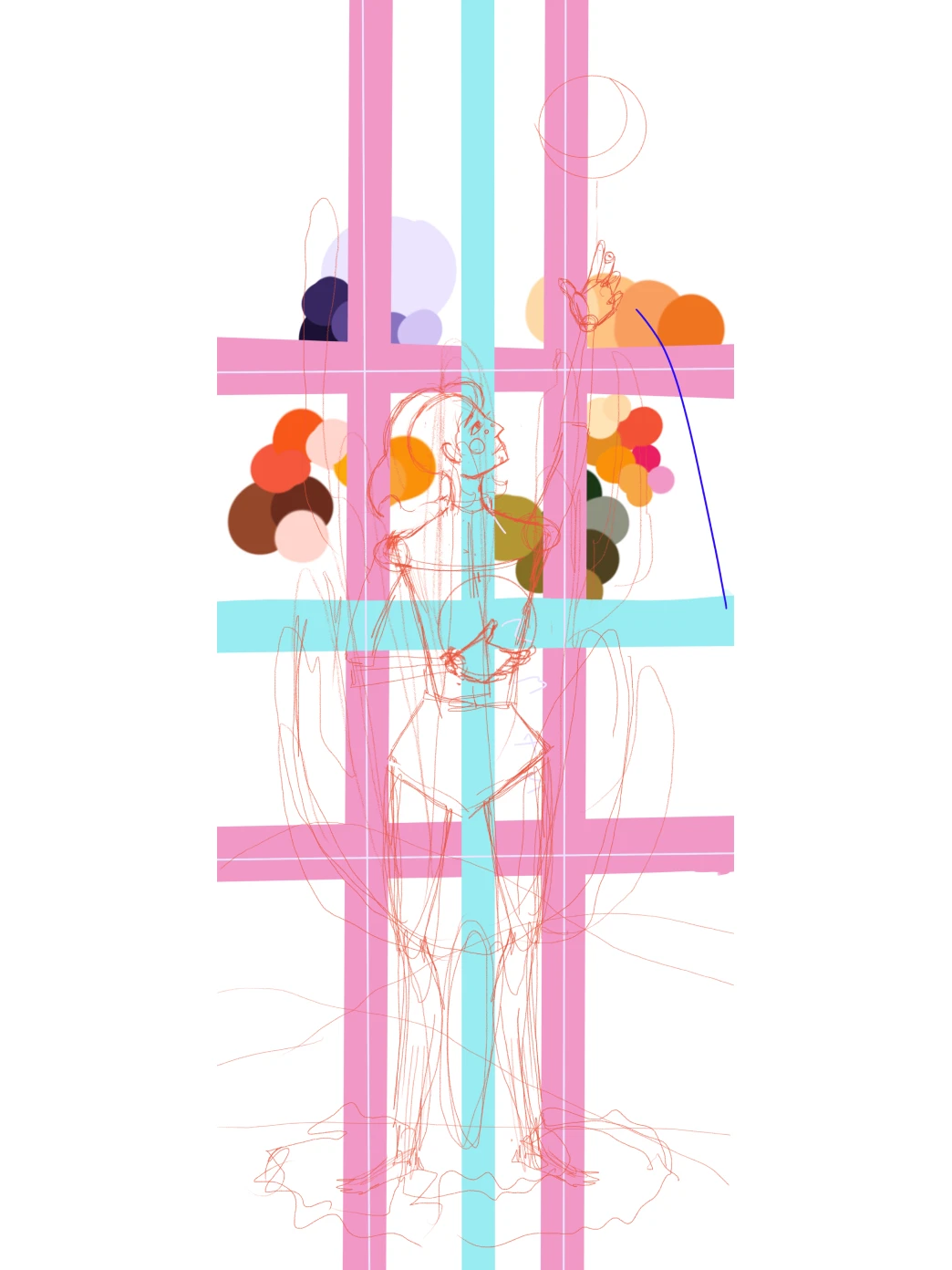
Rough sketch, color palette and layout lines
Step 2: brief
Okay, up to here, we have some concepts and keywords: warmth, color, Mexico, bedroom, a place where I wake up, a place where I sleep, cycles, beauty.
These ideas helped me narrow down a theme for the room. I’m from the very arid north, so I wanted something that reminded me of it but wasn’t necessarily from my city. Recently, I learned about the Seri people, also known as the Comcáac, an indigenous group native to Sonora, Mexico, near the Baja California region.
I found their worldview fascinating. They have beautiful traditions, like painting flowers on women’s faces and celebrating the New Year in the middle of our year. I’ve always had great appreciation for the indigenous groups of my country, and it’s disappointing that we don’t learn more about them in school or popular media.
So, I did some research: on their customs, traditional outfits, and the stories they tell. From their myths, I found imagery and concepts I loved: the stars, the sun and moon, the ocean by the desert, the unforgiving climate of the region that is home to resilient flora and fauna.
Slowly, these pieces started to come together: I would paint the desert to represent cycles. What cycle would I find myself repeating here? Sleeping. I wanted the paintings to hold meaning both at sunrise and sunset, so I focused on depicting the movement of the stars and planets.
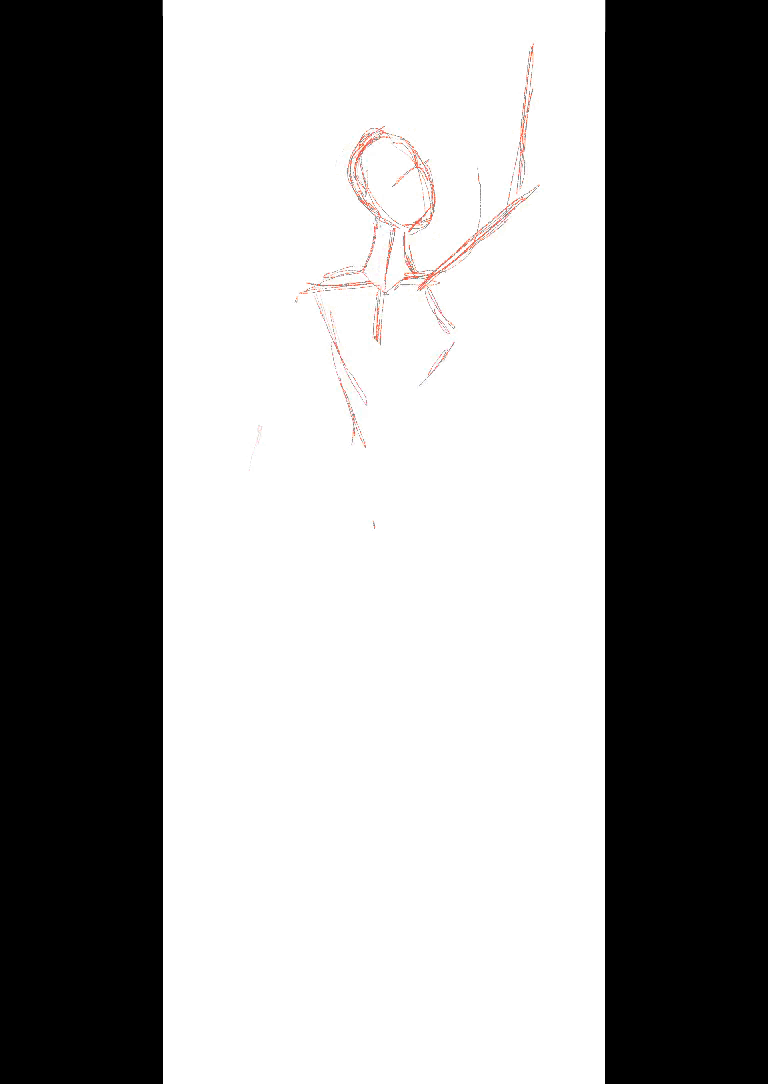
Digital sketching process for the mural
Step 3: Sketching
A quick confession—I actually started with a different mural before the one I’m describing here. There’s another painting that created the “rules” for all three. It’s a painting of a giant woman, her hair ablaze as she wakes up the flowers. She is the sun. It’s called Amanecer (Sunrise), and the woman is loosely based on one of my aunts. She represents several female figures in my family. I’m not going into that particular mural just yet. I will in the future. But I need a bit more time before I can get that personal. Forgive me.
Amanecer was where I made all the emotional and artistic decisions: the color palette, the way I would represent the sky as a gradient so you couldn’t tell which way the stars were moving, the research for the flora of the region. By the time I started working on Sol y Luna (Sun and Moon) and Estrella (Star), the next murals, I already had a sandbox to play in.
I knew exactly where in the room I would paint the mural and the size of my frame. It would be the last thing before turning off the light and the first thing when I reached for my phone to turn off the alarm. It had to be important. I knew I needed extra guidance, so I turned to tarot.
Tarot cards are full of meaning and symbols. I love them, and luckily, I was working on a canvas with similar proportions. I studied The Moon, The Star, and The Sun cards and decided the story of my mural. A woman dressed in traditional Seri clothing would switch the sun and moon. Was she doing this in the summer as part of the New Year? Was it an everyday chore she performed twice a day? I didn’t have to decide. It could be both. That was what mattered.
I prefer to sketch digitally, even if the final product won’t be. My iPad lets me sketch anywhere—from the couch to a coffee shop, depending on my level of laziness. Most importantly, I can refine every line over and over until I’m content. Very convenient for a perfectionist like me.
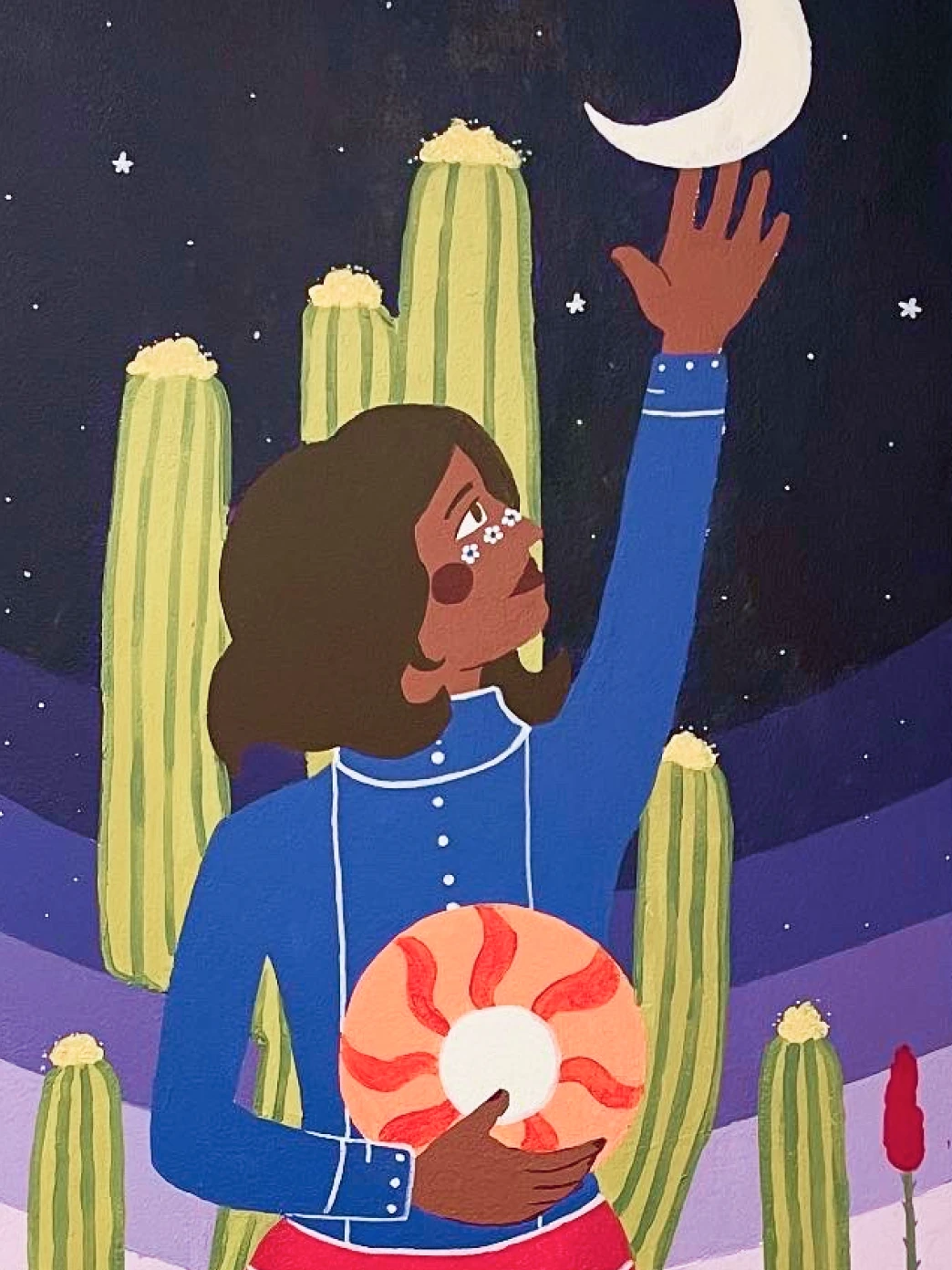
Close-up of the mural
Step 4: execution
I had my final sketch ready, my walls clean—it was time to grab the brushes. I asked the property owner for permission and got a yes. So, I headed to the local art shop and bought a few 500ml tubs of acrylic paint.
I’ve worked with many different mediums and materials. Oils, watercolors, pastels, markers, ink, pencils, and various combinations of them. But by far, the kindest to me has been acrylics. They’re inexpensive compared to oils yet can achieve similar effects. They’re more versatile than watercolors and more forgiving when you make mistakes. They last a long time, and unlike pastels, you can actually touch the finished product without smudging it. They’re also easier to mix than color markers or pencils, so with just a few base colors, you can achieve the exact tones you want.
Happy with my almost five liters of paint and some old brushes I had brought with me from Mexico, I was ready to get started. I outlined my working space with washi tape and sketched the design onto the wall with a pencil. One decimated eraser later, my lines were clean enough for the background layers of paint.
Up to this point, the design and sketching process for the three murals had been relatively fast. I used my free time on weekends, and in a matter of weeks, I had everything ready. The actual painting process, however, was something else.
I struggled at first to mix the right colors, I was out of practice, but after a few tries, I got close enough to my digital palette. Technically, the designs weren’t too difficult. I was working with solid colors, so I just had to keep my lines clean. I used washi tape again to help with precision and bought special paint markers for the tiny details, like the cactus spikes, to ensure consistent linework throughout.
All in all, it wasn’t that many hours of actual painting. Sure, I had to climb onto chairs to reach certain parts, move furniture, and work in some awkward corners, but it was doable.
The hardest part wasn’t the
painting itself. It was
having the energy to do it.
I’ll
explain more in the next section.
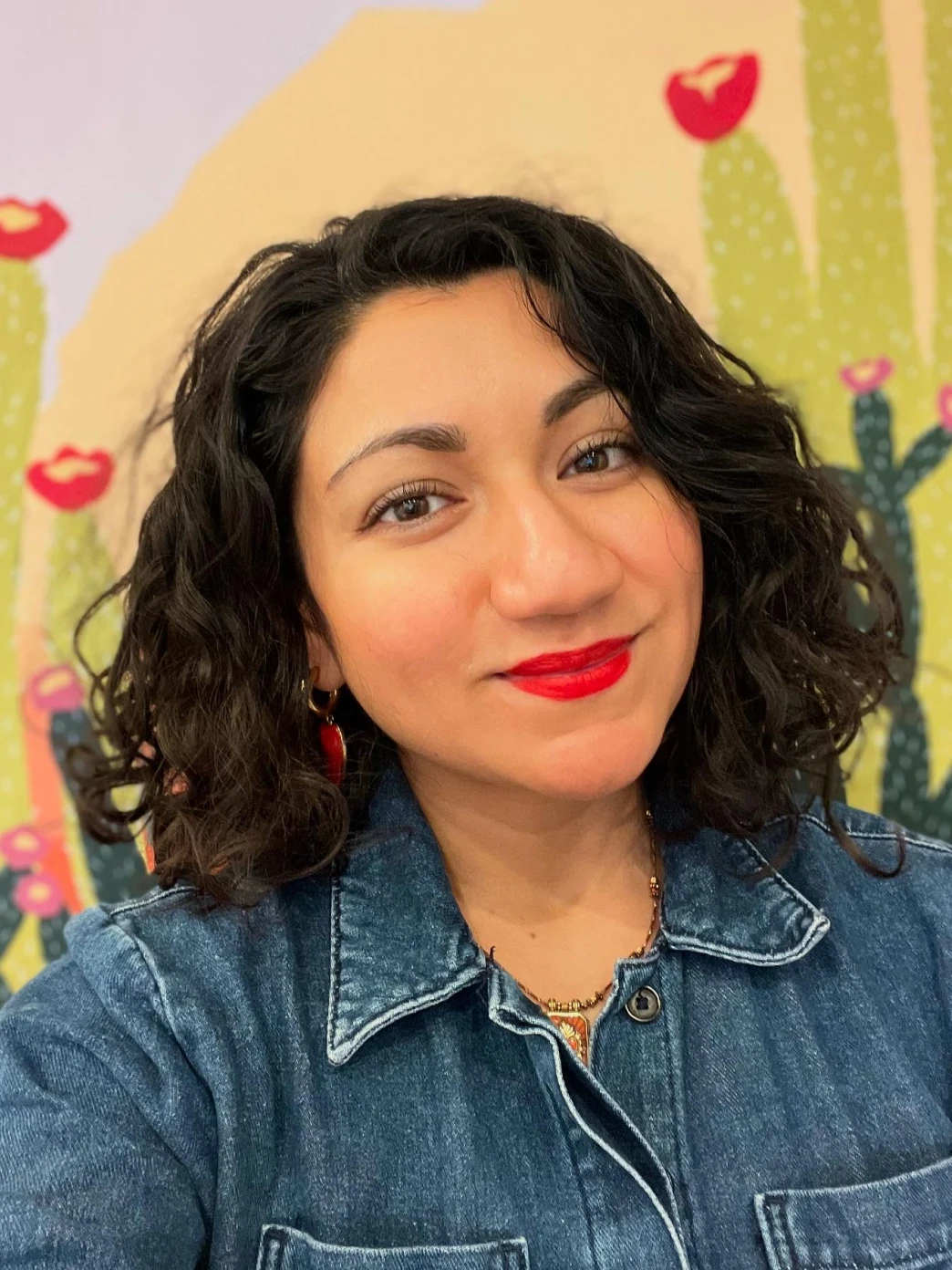
Me with my murals
Final Step: Art
Why is painting so hard for me?
For the times when I feel so happy I can’t
stop smiling or the times when I have been
overwhelmed beyond my limits, I turn to
painting. This medium is deeply
emotional and personal for me. It’s a
hard mental state to access—it's a
place of extremes.
I would even go as far as
calling it my Avatar state. If you’ve
watched Avatar: The Last Airbender. If not,
it's a powerful condition where the Avatar can
access the skills and knowledge of all their past
lives, making them incredibly strong.
I remember a conversation in art school when a teacher asked us: what’s the difference between an artist and a professional? According to him, an artist follows their mood, they can only create when their heart is full. A professional doesn’t have that luxury. The creative professional must produce work regardless of whether their cup is full or empty. We have to eat. There’s no rich patron keeping us fed and comfortable in their court.
Except, in this situation, I could afford the luxury of taking my time. I don’t paint for a living. The only price to pay was a half-finished painting on the wall. I was my own rich patron.
The year I started the murals, I had just
moved to Germany and was dealing with so many
new things. I had no extra energy to spare.
The next year, personal
events completely shifted my life
plan, pulling my focus elsewhere. Even in
these dire conditions, I would find the odd
hour to paint. But by the end of last
year, things started to stabilize, and I found a
pocket of peace to paint. I made the
most of it, squeezing in enough sessions to finish
the murals.
Like all symbols, my
murals carry a lot of meaning. A story, a
feeling, a piece of me
woven into the walls. A moment I was
happy enough to paint. A moment I was so
sad I needed to paint.
I can’t
imagine the room without them.
That’s Enough About Me!
What do you think? What should I focus on next?
Do you want to learn more about the other murals? Do you think my landlady would paint over my murals when I eventually move out?
Let me know—shoot me an email! 😊
📩
sifuentesanita@gmail.com